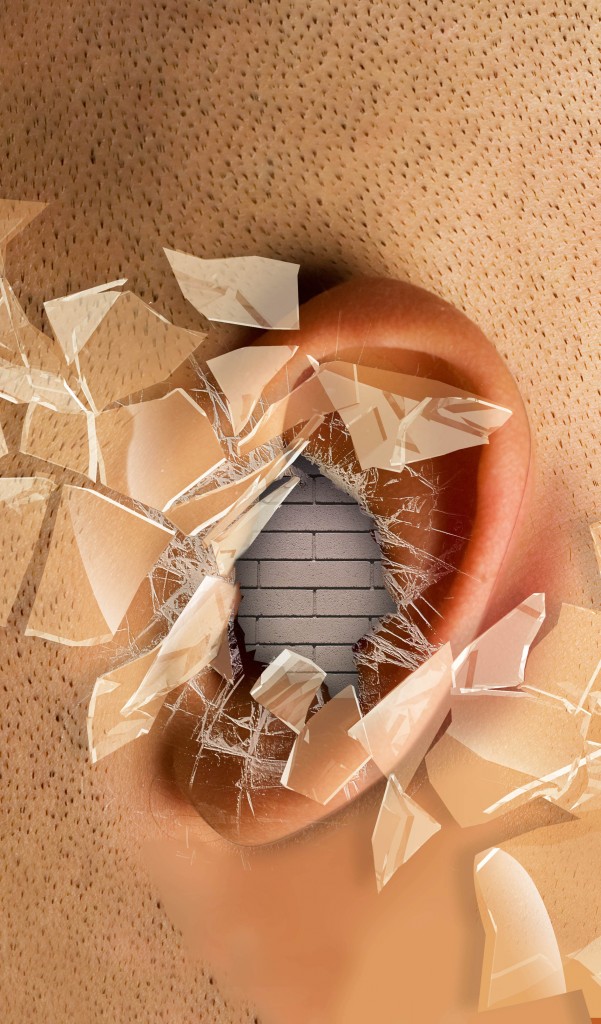Hearing loss in young people is rising due to earbud use

By Jackson Ly
The Guardsman
Young adults and children are at a greater risk for hearing loss today than even a couple of decades ago due to the increasing popularity and use of earbuds and MP3 players, according to an article published by the American Osteopathic Association.
One in five teens are currently affected by hearing loss, a rate 30 percent higher than in the 1980s and 1990s, but damage from using earbuds can be prevented by moderating volume levels.
When loud music plays through earbuds, the eardrum transfers that sound to the inner ear, where thousands of inner hair cells are transmitting vibrations to the nerves. Earbuds are usually worn as close as possible to the eardrum.
Exposure to loud noise over time will cause those hair cells to shear or break off, City College instructor and speech pathologist Joyce E. Foreman said.
“There’s nothing to regenerate these hair cells anymore. When the hair cells are gone, they are gone,” Foreman said. “Hearing is one of the senses that you cannot get back.”
Hearing loss symptoms include ringing, buzzing or roaring in one’s ears. Muffling or sound distortion also occurs after hearing a loud noise.
Permanent hearing loss can occur when people listen to their MP3 players above 70 percent volume (over 85 decibels) through earbuds, according to teenshealth.org.
Anything under 85 decibels is considered safe, Foreman said.
To put that number into perspective, MP3 players are capable of producing 120 decibels, which is the equivalent of having a rock concert inside one’s ears, said osteopathic pediatrician James E. Foy in an interview with the American Osteopathic Association. After an hour and 15 minutes of listening, hearing loss can occur.
Every increase of 10 decibels means an increase of 10 times more power, but human ears will only notice the sound as being twice as loud, according to the National Institute on Deafness and Other Communication Disorders.
The American Osteopathic Association recommends the 60 percent/60 minute rule to moderate earbud usage: no more than 60 percent of maximum volume for no more than 60 minutes.
Noise-canceling headphones pose less of a risk than earbuds because they are worn further away from one’s eardrums. Such headphones can eliminate background noise, which reduces the need to increase the volume, Foreman said.
A New York Times article mentioned that earbuds can be up to 9 decibels louder than headphones, which is a big deal when listening to music from 70 to 80 decibels.
Other risk factors besides earbuds include such environmental noise like loud music blasting from speakers at a bar or nightclub.
In the Club
When one is in a noisy environment, wearing earplugs is an important preventative for hearing loss, Foreman said. Earplugs can reduce noise by 9 to 25 decibels depending on how they are made and fit, according to the American Speech-Language-Hearing Association.
Nick Yee, a second year Live Sound student at City College, has been a DJ since he was 13 years old, and he has never worn earplugs.
“You probably should, but I don’t,” Yee said. “I’ve done so many clubs, after a while, your ears just get adapted to it.”
Noise at a dance club can reach up to 110 decibels, according to an article from earbuds.org.
Yee has to walk up to clubgoers just to hear what they want. Yee still has his hearing, but some of his co-workers may not.
“Some of the guys in the company have hearing loss,” Yee said. “They push the system harder, which increases the chances of the speaker being blown.”
Even though Yee does not use earplugs, he recommends them to people who are not used to the club scene. It is also important to avoid standing directly next to the speakers, Yee said.
At home, Yee listens to music through his headphones at 30-35 percent volume, and his last hearing test was over seven years ago.
“I still got it, man,” Yee said.
For information on getting a hearing screening, contact the Disabled Students Programs & Services at (415) 561-1005.
